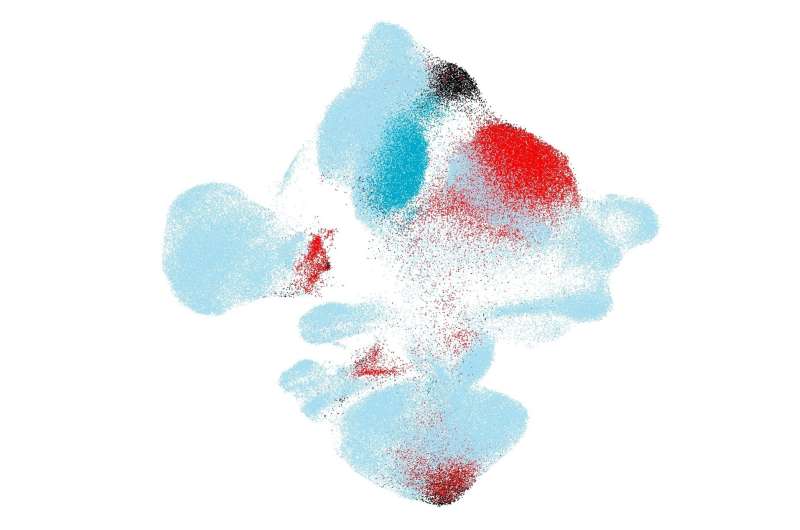AI identifies single diseased cells

The Human Cell Atlas is the world's largest, growing single-cell reference atlas. It contains references of millions of cells across tissues, organs and developmental stages. These references help physicians to understand the influences of aging, environment and disease on a cell—and ultimately diagnose and treat patients better. Yet, reference atlases do not come without challenges. Single-cell datasets may contain measurement errors (batch effect), the global availability of computational resources is limited and the sharing of raw data is often legally restricted.
Researchers from Helmholtz Zentrum München and the Technical University of Munich (TUM) developed a novel algorithm called "scArches," short for single-cell architecture surgery. The biggest advantage: "Instead of sharing raw data between clinics or research centers, the algorithm uses transfer learning to compare new datasets from single-cell genomics with existing references and thus preserves privacy and anonymity. This also makes annotating and interpreting of new data sets very easy and democratizes the usage of single-cell reference atlases dramatically," says Mohammad Lotfollahi, the leading scientist of the algorithm.
Example COVID-19
The researchers applied scArches to study COVID-19 in several lung bronchial samples. They compared the cells of COVID-19 patients to healthy references using single-cell transcriptomics. The algorithm was able to separate diseased cells from the references and thus enabled the user to pinpoint the cells in need for treatment, for both mild and severe COVID-19 cases. Biological variation between patients did not affect the quality of the mapping process.
Fabian Theis: "Our vision is that in the future we will use cell references as easily as we nowadays do for genome references. In other word, if you want to bake a cake, you usually do not want to try coming up with your own recipe—instead you just look one up in a cookbook. With scArches, we formalize and simplify this lookup process."
scArches is available on Github.
More information: Lotfollahi et al, 2021: Mapping single-cell data to reference atlases by transfer learning. Nature Biotechnology, DOI: 10.1038/s41587-021-01001-7
Journal information: Nature Biotechnology
Provided by Helmholtz Association of German Research Centres




















